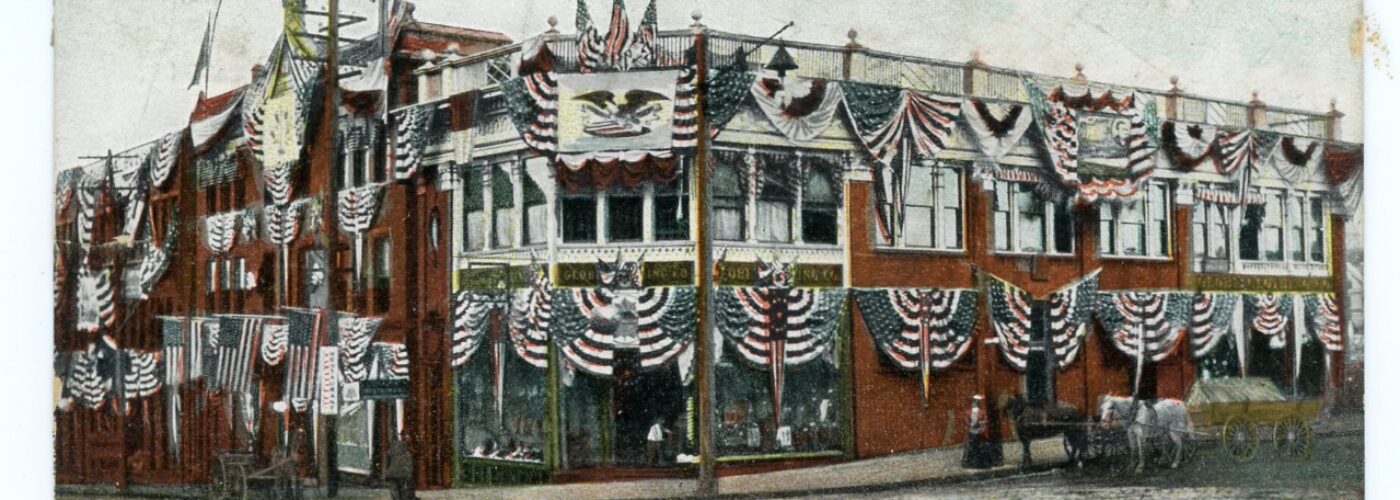Within three generations of the fall of New France, a new conquest was under way.
French Canadians were leaving their ancestral homeland along the banks of the St. Lawrence River and seeking a better fate in the United States. Soon, from the Upper St. John Valley, through budding mill towns, through rural Vermont and New York, to Illinois, Michigan, and even California, expatriates were building something new. French-Canadian heritage encountered U.S. institutions and culture, out of which came that very “something”: Franco-America.
Franco-America has been a lived experience.
Franco-America has been a network of institutions and communities.
Franco-America has been an idea both loved and lamented.
The earliest migrants likely had no such thoughts. Few might imagine a permanent and collective experience in which distinct cultures nourished one another. Some traveled to and settled in areas where the long-term survival of French-Canadian heritage was impracticable. Integration reduced Canadianness to a genealogical fact. Elsewhere and at other times, migrants might hope to form new communities anchored by familiar institutions—at first, those of the ancestral parish, and, later, those born of the Franco-American hyphen.
Everywhere, the genealogical fact remains and begs to be understood. In many places, in the U.S. Northeast and beyond, there is more to Franco-America than ancestry. There is a living and breathing culture. Not without its challenges, it too invites historicization: an inquiry as to how this all came to be. The Query the Past blog explores this rich past—migration, development, transformation—from the 1770s to the present.
Three ways to find information:
Browsing. Blog posts appear in reverse chronological order under the “Franco-Americans” tab. Scroll down and flip to subsequent pages; something may catch your eye.
Standard Search. A search box appears in the right-hand menu. Try a search term and see what pops up.
Subject Search. The drop-down menu on the right gathers blog posts by topic. This is a quick and easy way of finding information about a common or recurrent topic.
This website aims to disseminate old and new perspectives about Franco-American history and culture. The writing is entirely the site’s creator unless otherwise specified. Please cite appropriately.
RECENT ARTICLES
Murder in Waltham: An Acadian Story
Mr. and Mrs. Felix Linden seemed to lead a quiet life. In the 1920s, like other men from the small, seaside town of West Arichat, Nova Scotia, Felix worked in the fisheries. Mrs. Linden—Hattie—raised their two young children and kept the home. They lived in a tight-knit community and were but a short walk from friends and family. If the trail of official records is any indication, there was little to set them apart from millions of Canadians leading an equally ordinary existence. Continue reading in Le Forum.
Race, Privilege, and the Problem of the Subaltern Franco-American
When the Payette family moved to northern New York some time around 1850, the mass migration of French Canadians to the United States was in its infancy. This movement of people from the St. Lawrence River valley continued for the better part of a century, with brief interruptions in the 1870s and in the early part of the twentieth century. Whereas a high proportion of early migrants settled in the Midwest, the U.S. Northeast became the primary destination for those seeking to steady themselves financially. Continue reading on the SHGAPE blog.
Honoring Vermont’s French-Canadian history
One hundred years ago, following a nationwide recession, the owners of granite quarries and finishing shops in the Barre area gave workers an ultimatum. If the unions did not accept a drastic wage cut, the industry would implement an open-shop system and thus erode the unions’ bargaining power. By April 1922, taking matters in their own hands, granite cutters and finishers were on strike. By May, they were resisting company efforts to bring outside labor. Continue reading on VTDigger.
